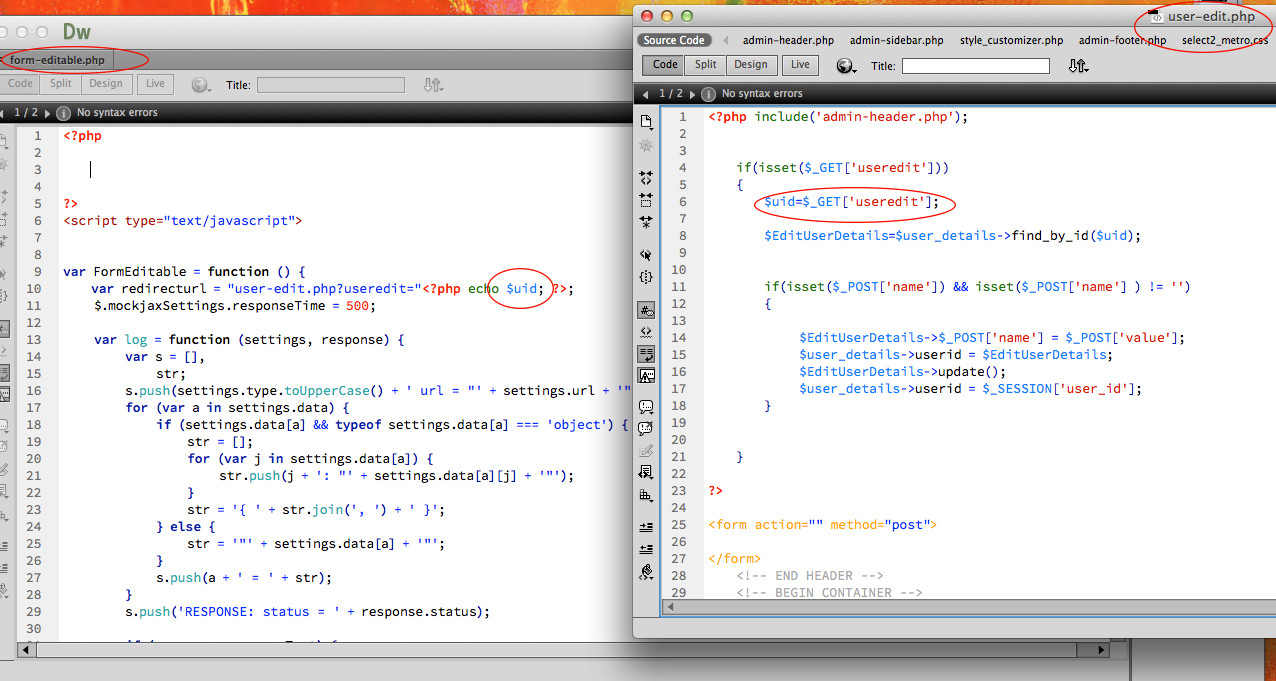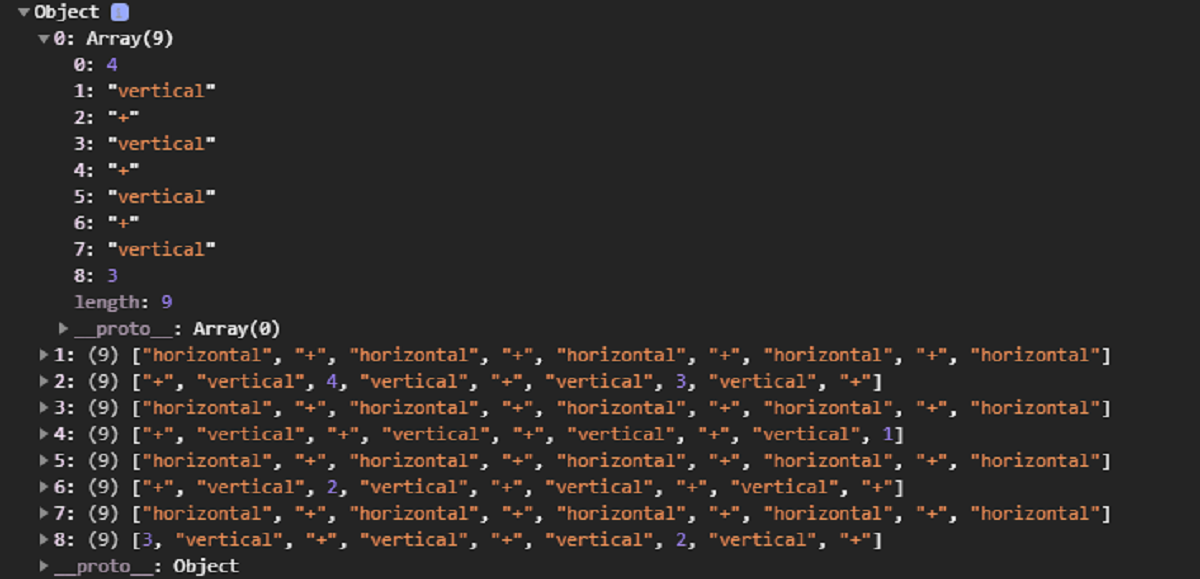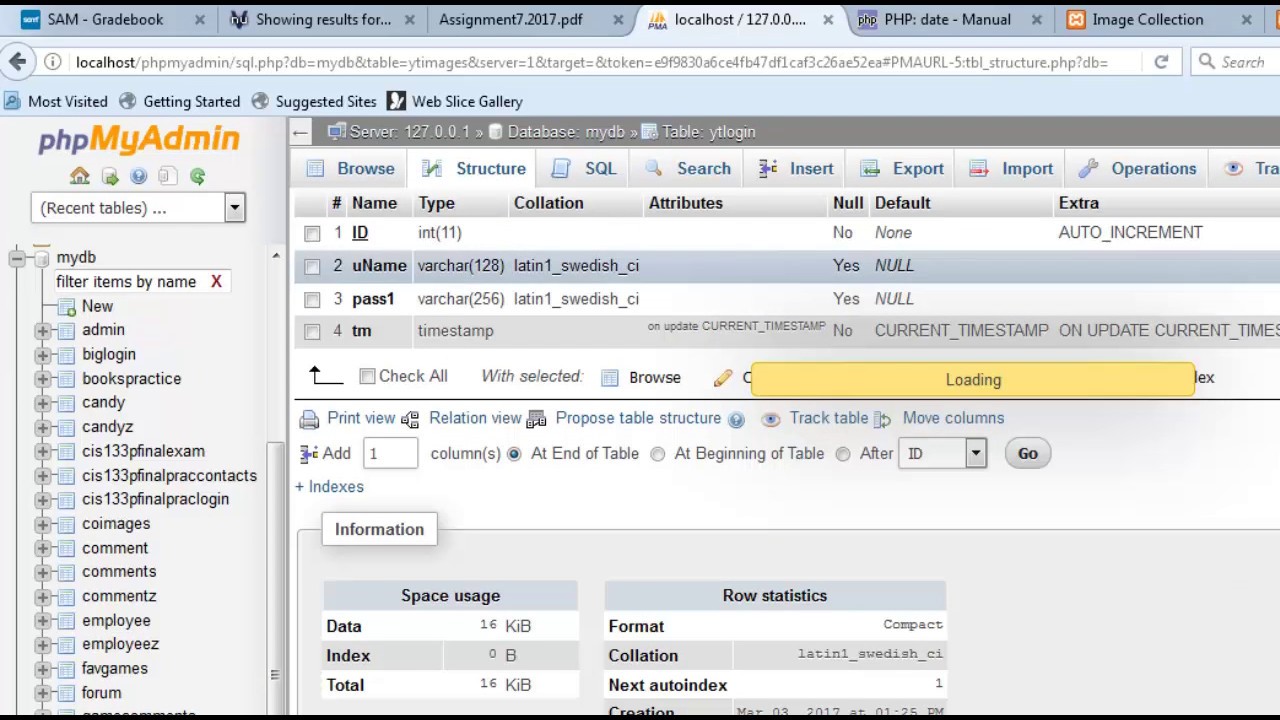Introduction
When working with PHP, it is often necessary to pass variables from one page to another. This can be useful in various scenarios, such as maintaining user information across multiple pages or passing data between different sections of a website. Thankfully, PHP offers several methods to achieve this functionality.
In this article, we will explore different techniques to pass variables from one page to another in PHP. We will discuss the use of the GET method, session variables, cookies, hidden form fields, URL query strings, and even leveraging databases. By understanding the strengths and limitations of each method, you can choose the most appropriate approach for your specific use case.
The ability to pass variables efficiently and securely between PHP pages is crucial in building dynamic and interactive websites. It allows us to create personalized experiences for users, customize content based on their preferences, and enable seamless navigation across different sections of a site.
So, whether you are a beginner learning the ropes of PHP or an experienced developer looking to enhance your understanding of variable passing, this article will provide you with the necessary knowledge and guidance to accomplish your goals.
PHP GET method
The GET method is one of the simplest ways to pass variables from one page to another in PHP. It involves appending the variables to the URL of the target page. When a user clicks on a link or submits a form using the GET method, the variables and their values are visible in the URL.
For example, if we want to pass a variable named “name” with the value “John” to another PHP page, we can construct the URL as follows:
http://example.com/destination.php?name=John
In the destination.php page, we can retrieve the value of the “name” variable using the $_GET superglobal, like this:
$name = $_GET["name"];
We can then use the value of the “name” variable to perform any necessary operations or display personalized content.
The use of the GET method has some advantages. Firstly, it is easy to implement, as it requires no additional setup or configuration. Secondly, it allows for easy sharing of URLs, as the variables and their values are directly visible in the address bar. Lastly, it is suitable for passing small amounts of data.
However, it’s important to note that using the GET method to pass sensitive or confidential information is not recommended, as the variables and their values are visible in the URL. Additionally, there is a practical limit to the amount of data that can be passed using this method.
In summary, the GET method provides a quick and straightforward way to pass variables between PHP pages by appending them to the URL. While it has its limitations, it is an effective solution for passing small amounts of non-sensitive data.
Using session variables
Session variables provide a reliable way to pass variables between PHP pages without exposing them in the URL or relying on form submissions. A session is a way to store information that can be accessed across multiple pages during a user’s visit to a website.
To use session variables, we need to start a session using the session_start() function at the beginning of each PHP page where we want to access the session data. Once the session has started, we can store variables in the $_SESSION superglobal array.
For example, to pass a variable named “username” with the value “john123” to another PHP page, we can do the following:
session_start();
$_SESSION["username"] = "john123";
In the destination PHP page, we can retrieve the value of the “username” variable like this:
session_start();
$username = $_SESSION["username"];
Session variables offer several advantages. Firstly, they allow us to pass variables securely without exposing them in the URL or relying on client-side operations. Secondly, they can store larger amounts of data compared to the GET method. Thirdly, session variables persist across multiple pages during a user’s visit, allowing for seamless and consistent information sharing.
However, it’s important to note that session variables rely on server-side storage and generate a unique session ID for each user. This makes them more suitable for passing sensitive or confidential information. Additionally, it’s necessary to manage session data properly by destroying the session when it’s no longer needed or setting an expiration time to prevent excessive storage.
In summary, session variables provide a secure and efficient way to pass variables between PHP pages. By starting a session and storing variables in the $_SESSION array, we can easily access and manipulate the data across multiple pages during a user’s session on the website.
Using cookies
Cookies are another method to pass variables between PHP pages. A cookie is a small piece of data that is stored on the user’s device by the web browser. It can be accessed and manipulated by both the client and the server.
To set a cookie in PHP, we can use the setcookie() function. This function accepts parameters such as the cookie name, value, expiration time, domain, and path.
For example, to pass a variable named “language” with the value “en” to another PHP page, we can do the following:
setcookie("language", "en", time() + 3600, "/");
In the destination PHP page, we can retrieve the value of the “language” cookie using the $_COOKIE superglobal, like this:
$language = $_COOKIE["language"];
Cookies offer some advantages. Firstly, they can be used to pass variables across different sessions and visits to the website since they are stored on the user’s device. Secondly, they provide a convenient way to store and retrieve small amounts of data. Finally, they can be set with an expiration time, allowing us to control how long the data remains accessible.
However, it’s important to be cautious when using cookies. They are accessible and modifiable by the user, so they should not be used to store sensitive or confidential information. Additionally, some users may disable cookies in their browsers, which can affect the functionality of cookie-based variable passing.
In summary, cookies provide a way to pass variables between PHP pages by storing them on the user’s device. While they offer flexibility and persistent data storage, it’s important to consider their limitations and use them judiciously for non-sensitive information.
Using hidden form fields
Hidden form fields are an effective way to pass variables between PHP pages, especially when submitting forms. A hidden form field is an input field that is not visible to the user but still gets submitted when the form is submitted.
To use hidden form fields, we need to include an input element with the type set to “hidden” and the name and value attributes set to the variable we want to pass.
For example, if we want to pass a variable named “product_id” with the value “123” to another PHP page when a form is submitted, we can include a hidden form field like this:
<input type="hidden" name="product_id" value="123">
In the destination PHP page, we can retrieve the value of the “product_id” variable using the $_POST or $_GET superglobal arrays, depending on the form submission method (POST or GET).
$product_id = $_POST["product_id"]; or $product_id = $_GET["product_id"];
Hidden form fields offer simplicity and ease of implementation. They can be used to pass variables of any size and can be included in any type of form submission, whether it’s a simple button-click or a more complex form submission process.
However, it’s important to note that hidden form fields are not suitable for passing sensitive or confidential information, as the values are visible in the HTML source code and can be manipulated by the user. Additionally, they are tied to form submissions, so they may not be applicable in all scenarios where variable passing is required.
In summary, hidden form fields provide a straightforward and effective way to pass variables between PHP pages when submitting forms. By including a hidden input field with the desired variable and value, we can retrieve the passed variable in the destination PHP page using the appropriate superglobal array.
Using URL query strings
URL query strings are a common method to pass variables between PHP pages. Query strings allow us to append variables and their values to the URL, making them easily accessible on the destination page.
To use URL query strings, we need to construct the URL with the variable and its value appended after a question mark. Multiple variables can be included by separating them with an ampersand symbol.
For example, if we want to pass a variable named “category” with the value “books” and a variable named “sort” with the value “asc” to another PHP page, we can construct the URL like this:
http://example.com/destination.php?category=books&sort=asc
In the destination PHP page, we can retrieve the values of these variables using the $_GET superglobal array.
$category = $_GET["category"];
$sort = $_GET["sort"];
URL query strings provide flexibility and ease of use. They are widely supported by web browsers and can be used to pass variables between different websites and across multiple pages. Additionally, they can be easily modified and shared.
However, it’s important to be cautious when using URL query strings for passing sensitive or confidential information, as the values are visible in the URL and can be easily tampered with by the user. Additionally, there is a practical limit to the length of URL query strings.
In summary, URL query strings offer a simple and versatile method to pass variables between PHP pages. By appending variables and their values to the URL, we can easily retrieve the values on the destination page using the $_GET superglobal array. It’s important to consider the limitations and potential security risks when using URL query strings.
Using database
Another powerful method to pass variables between PHP pages is by leveraging a database. By storing the variables in a database table, we can retrieve and use them in different PHP pages as needed.
To use a database for variable passing, we need to create a table with the necessary columns to store the variables and their corresponding values. We can then insert the variables into the table on one page and retrieve them on another page.
For example, let’s say we have a table called “variables” with columns “name” and “value”. We can insert a variable named “username” with the value “john123” into the table like this:
INSERT INTO variables (name, value) VALUES ('username', 'john123');
In the destination PHP page, we can retrieve the value of the “username” variable from the table using SQL queries.
SELECT value FROM variables WHERE name = 'username';
Using a database for variable passing offers several advantages. It provides a centralized and scalable solution, allowing us to store and retrieve variables of any size or complexity. Additionally, databases offer various functionalities such as searching, sorting, and updating, which can be useful when working with large amounts of data or dynamic content.
However, using a database might introduce some complexity compared to other methods. It requires establishing a database connection, designing and managing the table structure, and executing SQL queries to retrieve the variables. Also, using a database for variable passing is recommended when working with persistent or frequently updated data rather than transient or temporary variables.
In summary, utilizing a database for variable passing provides a robust and flexible solution. By storing the variables in a database table, we can easily retrieve and use them in different PHP pages. This method is particularly useful for managing persistent or dynamic data across a website or application.
Conclusion
Passing variables from one PHP page to another is a common requirement when building dynamic and interactive websites. Throughout this article, we have explored various methods to achieve this, including the GET method, session variables, cookies, hidden form fields, URL query strings, and leveraging a database.
The choice of which method to use depends on the specific needs and constraints of your project. The GET method is simple to implement and suitable for passing non-sensitive data, while session variables provide a secure and convenient way to store and share data across multiple pages during a user’s session. Cookies offer persistence and can be used to pass variables across different sessions, while hidden form fields are effective when submitting forms. URL query strings offer flexibility and easy sharing of data through the URL, and leveraging a database provides scalability and advanced data management capabilities.
Before choosing a method, it’s important to consider factors such as the size and sensitivity of the data, security requirements, ease of implementation, and the overall architecture of your application.
In conclusion, understanding how to pass variables between PHP pages is essential for creating personalized and dynamic websites. By leveraging the various methods discussed in this article, you can provide a seamless and interactive user experience, customize content based on user preferences, and build robust web applications that can handle complex data flows.

























